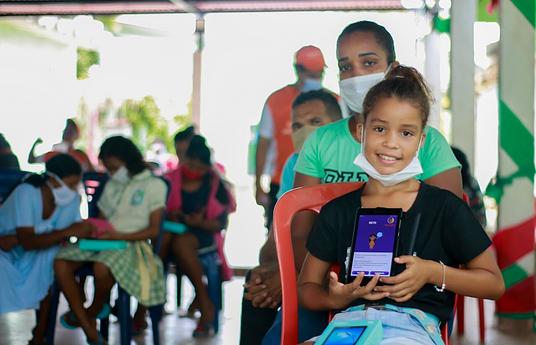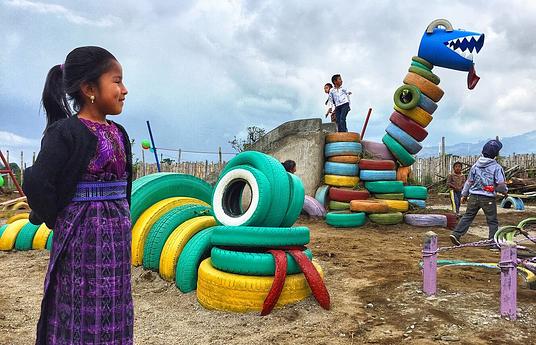Northeast Ohio
Northeast Ohio is a place of amazing opportunity and difficult challenges. Its history as a once-mighty industrial center is a complicated legacy. Some towns across the region — which spans from Cleveland to Akron to Youngstown — have rebounded from years of industrial disinvestment, while others still face profound economic challenges.
The NeoSTEM Ecosystem
With its network of partners ranging from library systems to after-school clubs to school districts, the NeoSTEM Ecosystem works to create meaningful STEM learning opportunities, empowering the next generation of knowledge creators.
NeoSTEM's programs include WIR’ED, which links students with marketing professionals to support local businesses and improve their online presence; the DigiRacer, an autonomous, student-built soap box derby vehicle; and Dancing with the Coding Bees, an interdisciplinary project in which students learn to code by studying dance and the movement of bees. For each of these programs, there is no set textbook or set of instructions. Instead, with guidance from NeoSTEM's members, students design their own leaning experiencesand determine the outcome of each project.
The NeoSTEM Ecosystem's Commitment
The NeoSTEM Ecosystem is committed to fostering collaborations that lead to inclusive, relevant, active learning.NeoSTEM seeks to create more meaningful STEM learning opportunities for all that result in better educational engagement, improved graduation rates, and alignment among all sectors of the economy.
Examples and Highlights:
- WIR’ED was created as a pilot of the NeoSTEM Ecosystem for many purposes, including the replicable demonstration of placing students as teachers and coaches for key members of their communities. The pilot pairs students with business owners and marketing professionals to solve challenges that face business owners operating in an online environment. Students help business owners improve their online operations, while students gain important real-world experience and confidence as collaborators. By placing students in the positions of teachers and coaches, communities come to see students as knowledge creators and contributors. Read more about the program.
- The Digiracer combines the time-honored tradition of the Soap Box Derby — where children build and race miniature cars — with the new technology of autonomous vehicles. The Soap Box Derby originated in Akron, Ohio, and students throughout the region now breathe new life into the idea by building self-driving cars, learning science and engineering principles along the way. The project is being realized in a variety of different settings, including traditional classrooms, after-school clubs, and in individual homes where families work on coding and building the cars together. In some cases, students work in teams to build one car; in others, the car is an individualized program where students build cars on their own.
- Dancing with the Coding Bees integrates the arts with coding and biomimicry. By using Scratch — a student-friendly coding program — and studying dance movements, students code a dance to mimic a swarm of bees moving to specific regions. Each group creates a program in Scratch to decipher these dance movements, learning programming techniques in the process. The program has operated in after-school settings throughout the region, with students working in groups to learn coding and to study bees and movement together.



